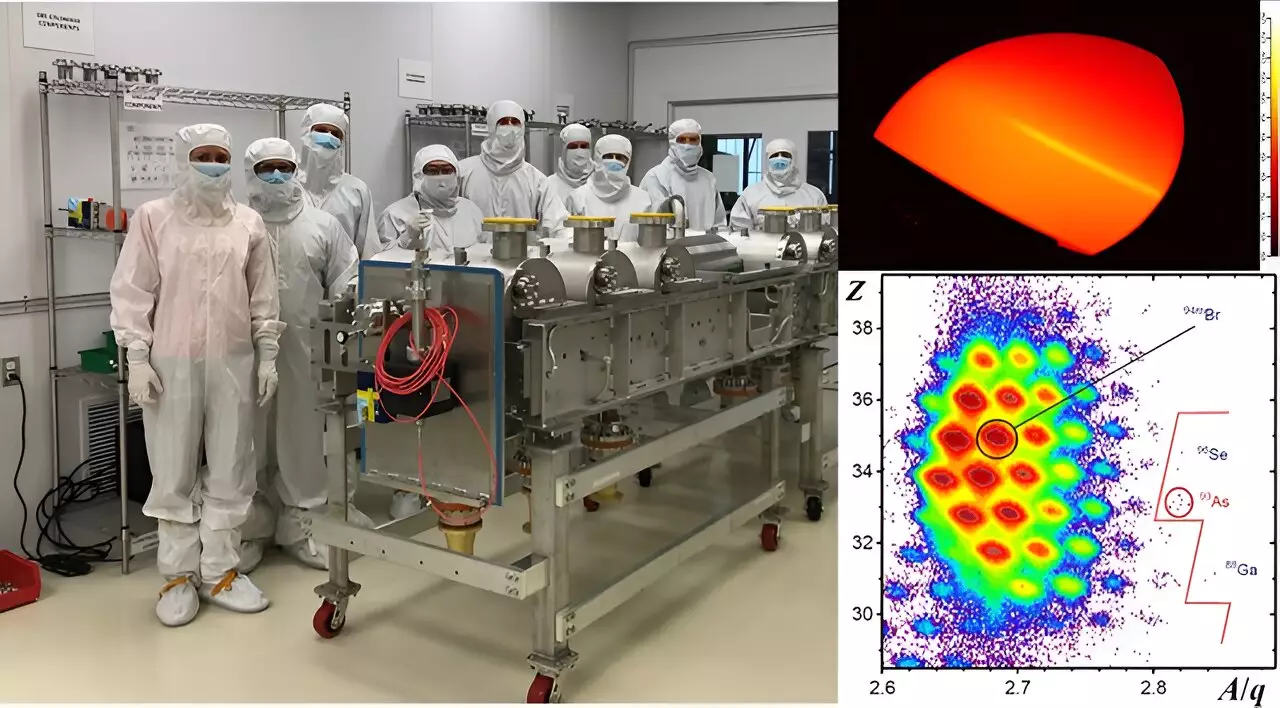Recent advancements at the Facility for Rare Isotope Beams (FRIB) have marked a significant milestone in the realm of isotope studies. Spearheaded by an exceptional team of scientists and engineers, they successfully accelerated a high-power beam of uranium ions, achieving a groundbreaking continuous beam power output of 10.4 kilowatts aimed at a target. This remarkable feat, detailed in the prestigious journal *Physical Review Accelerators and Beams*, cements uranium’s position as a pivotal element in isotope research, particularly given its complexity in acceleration.
Uranium has long been recognized as one of the most challenging elements to accelerate due to its inherent properties. Nevertheless, its significance in scientific exploration cannot be overstated. According to assessments from the National Academy of Sciences and the Nuclear Science Advisory Committee, over half of the highest-priority scientific programs involving rare isotopes necessitate a uranium primary beam. The unique ability of uranium to yield a diverse range of isotopes through processes like fragmentation or fission renders it invaluable for researchers seeking to explore new paradigms within the nuclear landscape.
The successful establishment of a high-power uranium beam at FRIB stands as a monumental achievement, setting a new standard for isotope production. Within a mere eight hours of operation, this innovative beam enabled scientists to generate and identify three new isotopes: gallium-88, arsenic-93, and selenium-96. This rapid advancement not only underscores the efficacy of the new beam but also signifies the facility’s potential to delves deeper into the rarely explored regions of nuclear physics.
Achieving this unprecedented uranium beam power was made possible through the stable operation of all accelerator devices at peak accelerating gradients. The groundbreaking capabilities of FRIB are attributed to several state-of-the-art technologies, such as the newly constructed superconducting linear accelerator integrating 324 resonators across 46 cryomodules, alongside innovative components such as a liquid-lithium stripper.
Furthermore, the application of advanced techniques for uranium production in the Electron Cyclotron Resonance (ECR) ion source and the unique heavy-ion Radio-Frequency Quadrupole (RFQ) system has proved invaluable. Researchers also pioneered new methodologies allowing for the simultaneous acceleration of multiple charge states of uranium after stripping with liquid-lithium film, ultimately achieving the record high power designated for this uranium application.
The accomplishments at FRIB not only represent a national achievement but also reflect an impressive international collaboration among scientists from the United States, Japan, and South Korea. The successful production and identification of gallium-88, arsenic-93, and selenium-96 in a 1.2 mm graphite target at the Advanced Rare Isotope Separator exemplifies the remarkable synergy that can be achieved through cooperative scientific efforts.
As FRIB continues to push the boundaries of nuclear research, it remains at the forefront of generating rare isotopes, promising exciting discoveries and expanding the understanding of nuclear materials. This milestone achievement not only symbolizes progress in isotope studies but also paves the way for future explorations into the mysteries of nuclear science.

